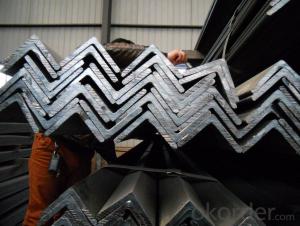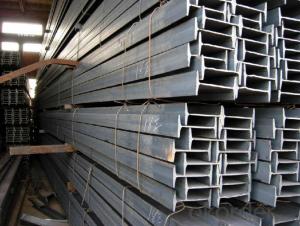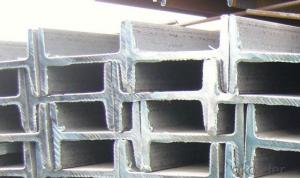High Quality Hot Rolled Equal Angle Steel Bars for Strcuture
- Loading Port:
- Tianjin
- Payment Terms:
- TT OR LC
- Min Order Qty:
- 25 m.t.
- Supply Capability:
- 200000 m.t./month
OKorder Service Pledge
OKorder Financial Service
You Might Also Like
Product Description:
OKorder is offering high quality High Quality Hot Rolled Equal Angle Steel Bars for Strcuture at great prices with worldwide shipping. Our supplier is a world-class manufacturer of steel, with our products utilized the world over. OKorder annually supplies products to European, North American and Asian markets. We provide quotations within 24 hours of receiving an inquiry and guarantee competitive prices.
Product Applications:
High Quality Hot Rolled Equal Angle Steel Bars for Strcuture are ideal for structural applications and are widely used in the construction of buildings and bridges, and the manufacturing, petrochemical, and transportation industries.
1. Supporting members, most commonly in the house raising industry to strengthen timber bears under houses. Transmission line towers, etc
2. Prefabricated structure
3. Medium scale bridges
4. It is widely used in various building structures and engineering structures such as roof beams, bridges, transmission towers, hoisting machinery and transport machinery, ships, industrial furnaces, reaction tower, container frame and warehouse etc.
Product Advantages:
High Quality Hot Rolled Equal Angle Steel Bars for Constrcution are durable, strong, and resist corrosion.
Main Product Features:
· Premium quality
· Prompt delivery & seaworthy packing (30 days after receiving deposit)
· Corrosion resistance
· Can be recycled and reused
· Mill test certification
· Professional Service
· Competitive pricing
Product Specifications:
1. Invoicing on theoretical weight or actual weight as customer request
2. Standard: EN10025, GB Standard, ASTM
3. Grade: Q235B, Q345B, SS400, ASTM A36, S235JR, S275JR
4.Sizes:
EQUAL ANGLES SIZES | |||
a(mm) | a1(mm) | thickness(mm) | length |
25 | 25 | 2.5---3.0 | 6M/12M |
30 | 30 | 2.5---4.0 | 6M/12M |
38 | 38 | 2.5 | 6M/12M |
38 | 38 | 3.0---5.0 | 6M/12M |
40 | 40 | 3.0---6.0 | 6M/12M |
50 | 50 | 3 | 6M/12M |
50 | 50 | 3.7---6.0 | 6M/9M/12M |
60 | 60 | 5.0---6.0 | 6M/9M/12M |
63 | 63 | 6.0---8.0 | 6M/9M/12M |
65 | 65 | 5.0---8.0 | 6M/9M/12M |
70 | 70 | 6.0---7.0 | 6M/9M/12M |
75 | 75 | 5.0---10.0 | 6M/9M/12M |
80 | 80 | 6.0---10.0 | 6M/9M/12M |
90 | 90 | 6.0---10.0 | 6M/9M/12M |
100 | 100 | 6.0---12.0 | 6M/9M/12M |
120 | 120 | 8.0-12.0 | 6M/9M/12M |
125 | 125 | 8.0---12.0 | 6M/9M/12M |
130 | 130 | 9.0-12.0 | 6M/9M/12M |
140 | 140 | 10.0-16.0 | 6M/9M/12M |
150 | 150 | 10---15 | 6M/9M/12M |
160 | 160 | 10---16 | 6M/9M/12M |
180 | 180 | 12---18 | 6M/9M/12M |
200 | 200 | 14---20 | 6M/9M/12M |
5. Material details:
Alloy No | Grade | Element (%) | |||||
C | Mn | S | P | Si | |||
Q235 | B | 0.12—0.20 | 0.3—0.7 | ≤0.045 | ≤0.045 | ≤0.3 | |
Alloy No | Grade | Yielding strength point( Mpa) | |||||
Thickness (mm) | |||||||
≤16 | >16--40 | >40--60 | >60--100 | ||||
≥ | |||||||
Q235 | B | 235 | 225 | 215 | 205 | ||
Alloy No | Grade | Tensile strength (Mpa) | Elongation after fracture (%) | ||||
Thickness (mm) | |||||||
≤16 | >16--40 | >40--60 | >60--100 | ||||
≥ | |||||||
Q235 | B | 375--500 | 26 | 25 | 24 | 23 | |
FAQ:
Q1: Why buy Materials & Equipment from OKorder.com?
A1: All products offered byOKorder.com are carefully selected from China's most reliable manufacturing enterprises. Through its ISO certifications, OKorder.com adheres to the highest standards and a commitment to supply chain safety and customer satisfaction.
Q2: How do we guarantee the quality of our products?
A2: We have established an advanced quality management system which conducts strict quality tests at every step, from raw materials to the final product. At the same time, we provide extensive follow-up service assurances as required.
Q3: How soon can we receive the product after purchase?
A3: Within three days of placing an order, we will begin production. The specific shipping date is dependent upon international and government factors, but is typically 7 to 10 workdays.
Q4: What makes stainless steel stainless?
A4: Stainless steel must contain at least 10.5 % chromium. It is this element that reacts with the oxygen in the air to form a complex chrome-oxide surface layer that is invisible but strong enough to prevent further oxygen from "staining" (rusting) the surface. Higher levels of chromium and the addition of other alloying elements such as nickel and molybdenum enhance this surface layer and improve the corrosion resistance of the stainless material.
Q5: Can stainless steel rust?
A5: Stainless does not "rust" as you think of regular steel rusting with a red oxide on the surface that flakes off. If you see red rust it is probably due to some iron particles that have contaminated the surface of the stainless steel and it is these iron particles that are rusting. Look at the source of the rusting and see if you can remove it from the surface.
Images:
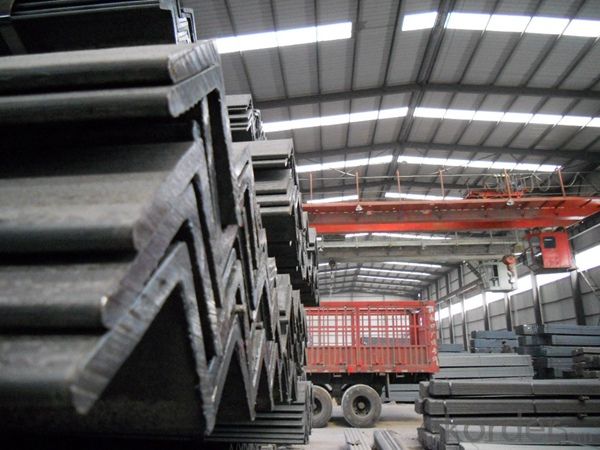
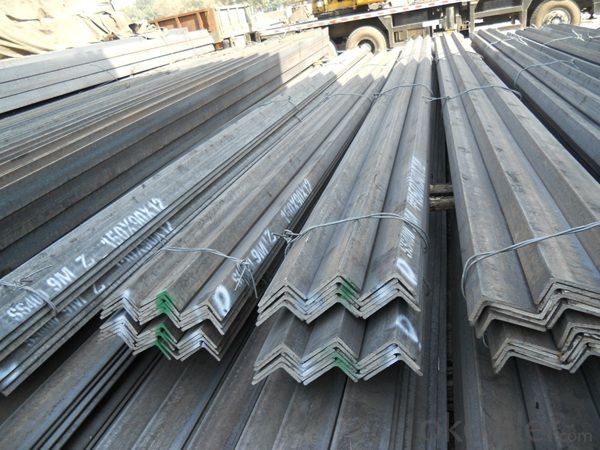
- Q:Can steel I-beams be used in data centers or server rooms?
- Yes, steel I-beams can be used in data centers or server rooms. Steel I-beams are commonly used in construction due to their strength and durability. In data centers and server rooms, where heavy equipment and racks are often installed, steel I-beams can provide the necessary support for the infrastructure. They can be used to create a structural framework that can bear the weight of servers, networking equipment, and other components. Additionally, steel I-beams can help distribute the load evenly and provide stability to the overall structure. However, it is important to ensure that the I-beams are properly designed and installed by qualified professionals to meet the specific requirements and regulations of data centers and server rooms.
- Q:What are the typical applications for Steel I-Beams?
- Steel I-beams, also known as H-beams or universal beams, are widely used in construction and engineering due to their structural strength and versatility. Some of the typical applications for steel I-beams include: 1. Building Construction: I-beams are commonly used as load-bearing support structures in buildings. They provide excellent structural integrity and stability, making them ideal for constructing floors, roofs, and walls. 2. Bridges: Steel I-beams are a popular choice for bridge construction due to their ability to span long distances while carrying heavy loads. They offer durability and flexibility, allowing engineers to design bridges that can withstand various environmental conditions. 3. Industrial Structures: Steel I-beams are extensively used in the construction of industrial facilities such as warehouses, factories, and power plants. These structures require robust support systems to handle heavy machinery, equipment, and storage loads. 4. Mezzanines: I-beams are commonly used to create elevated platforms or mezzanines within warehouses or commercial buildings. These structures provide additional floor space for storage or office areas, utilizing the strength and stability of I-beams to support the added load. 5. Residential Construction: In residential construction, steel I-beams are employed to create open floor plans and support large openings like windows and doors. They are also used for constructing basements, garages, and other areas where structural strength is crucial. 6. Automotive and Aerospace: Steel I-beams are utilized in the manufacturing of vehicles, including cars, trucks, and airplanes. They provide a strong framework for the chassis and support critical components like engines, suspensions, and wings. 7. Infrastructure Projects: Steel I-beams are commonly used in infrastructure projects such as tunnels, railways, and highways. They are employed for constructing retaining walls, culverts, and support structures, ensuring durability and stability in challenging environments. Overall, steel I-beams are essential components in a wide range of construction and engineering applications. Their strength, versatility, and ability to handle heavy loads make them indispensable in various industries.
- Q:What are the common applications of steel I-beams in commercial construction?
- Due to their strength, versatility, and cost-effectiveness, steel I-beams are commonly found in commercial construction. They have a multitude of applications in this industry, including: 1. Providing Structural Support: Steel I-beams are extensively used to support the structural integrity of commercial buildings. They bear the weight of the entire building, including floors, walls, and the roof. Their high strength-to-weight ratio allows them to withstand heavy loads and maintain the stability of the structure. 2. Acting as Columns: In commercial buildings, steel I-beams often serve as vertical supports or columns. They efficiently handle vertical loads and transfer them to the foundation. Their resistance to bending and buckling makes them a reliable choice for supporting multi-story structures. 3. Constructing Roof Trusses: Roof trusses, which evenly distribute the weight of the roof across the building, frequently incorporate steel I-beams. By using steel I-beams in roof trusses, longer spans can be achieved, reducing the need for additional supports and making the construction process more efficient and cost-effective. 4. Building Mezzanine Floors: Mezzanine floors, located between the main floors of a building, are commonly constructed using steel I-beams. These floors create additional space for storage, offices, or retail areas. Steel I-beams provide the necessary strength and rigidity to support the weight of the mezzanine floor and any loads placed upon it. 5. Constructing Canopies and Awnings: Canopies and awnings, which offer shelter and protection from the elements, often utilize steel I-beams in their construction. Steel I-beams provide the strength and durability needed to withstand wind loads and support the weight of the canopy or awning materials. In summary, steel I-beams are essential components in commercial construction due to their ability to provide structural support, stability, and flexibility. Their reliability, efficiency, and cost-effectiveness are evident in their widespread use across various applications within the construction industry.
- Q:How do steel I-beams perform in high wind areas?
- Steel I-beams are widely used in buildings and bridges because they are strong and durable. In high wind areas, steel I-beams perform exceptionally well because of their inherent properties. To begin with, steel is a material with great strength, which allows I-beams to withstand high wind forces. The I-shaped design of the beam gives it excellent load-bearing capacity, making it highly resistant to bending or buckling under strong winds. This structural integrity ensures that buildings or bridges remain stable and reduces the risk of collapse or damage. Furthermore, steel I-beams have a high stiffness-to-weight ratio, which means they are lightweight yet extremely rigid. This characteristic is crucial in high wind areas because it helps to minimize the deflection and sway caused by wind gusts. The stiffness of steel I-beams reduces the potential for vibrations, ensuring that the structure remains stable even during severe wind storms. In addition, steel is a highly ductile material, meaning it can effectively absorb and dissipate energy. In the event of high winds, the flexibility of steel I-beams allows them to absorb the wind load and distribute it throughout the structure. This prevents the concentration of forces in one area and helps maintain the overall stability of the building or bridge. Moreover, engineers can design and engineer steel I-beams to meet specific wind load requirements. By considering factors such as wind speed, direction, and the structure's location, engineers can determine the appropriate size and spacing of I-beams to ensure optimal performance in high wind areas. This customization ensures that the structure is adequately protected against wind-induced forces. In conclusion, steel I-beams are highly effective in high wind areas because of their strength, stiffness, and ductility. Their ability to resist bending or buckling, their lightweight yet rigid nature, and their capacity to absorb and distribute wind load make them an ideal choice for structural applications in areas prone to strong winds.
- Q:Can steel I-beams be used in the construction of schools and educational facilities?
- Yes, steel I-beams can definitely be used in the construction of schools and educational facilities. Steel is a strong and durable material that can provide structural stability and support to buildings. I-beams, specifically, are commonly used in construction due to their load-bearing capabilities, which make them suitable for supporting heavy loads and spanning long distances. Moreover, steel is fire-resistant and resistant to pests, making it a safe and reliable choice for educational buildings.
- Q:How do you calculate the bending stress in steel I-beams?
- In order to determine the bending stress in steel I-beams, one must take into account the properties of the beam, the applied load, and the cross-sectional dimensions of the beam. The bending stress, also known as flexural stress, indicates the beam's internal resistance to bending. To start, the moment of inertia (I) for the beam's cross-section must be calculated. This value represents how the area is distributed around the neutral axis and varies depending on the shape of the cross-section. For an I-beam, the moment of inertia can be determined using established formulas or by referring to engineering handbooks. After obtaining the moment of inertia, the maximum bending moment (M) acting on the beam can be calculated. This is determined by multiplying the applied load by the distance from the load to the point at which the bending stress is being evaluated. Typically, the maximum bending moment occurs at the point of greatest deflection or where the highest load is applied. Once the moment of inertia and maximum bending moment are known, the bending stress can be determined using the following formula: Bending Stress (σ) = (M * y) / I Here, σ represents the bending stress, M stands for the maximum bending moment, y denotes the perpendicular distance from the neutral axis to the outermost fiber of the beam, and I represents the moment of inertia. It is essential to compare the calculated bending stress with the allowable bending stress or design stress, which is a limit determined by the material's strength and safety factors. If the calculated bending stress exceeds the allowable stress, it may be necessary to redesign the beam or add additional support to ensure the safety and structural integrity of the I-beam.
- Q:Are steel I-beams cost-effective compared to other materials?
- Steel I-beams are widely recognized as a cost-effective option for various construction applications. Steel, being a durable and versatile material, offers exceptional structural support and load-bearing capacity, making it suitable for a range of projects, including bridges, high-rise buildings, and industrial structures. One notable advantage of steel I-beams is their impressive strength-to-weight ratio. Steel is considerably stronger than materials such as wood or concrete, enabling the creation of more efficient and lighter structures. This not only reduces construction costs but also minimizes the amount of required materials, resulting in savings in transportation and labor expenses. Moreover, steel is readily available with a well-established supply chain, making it a cost-effective choice compared to other less accessible or limited materials. Furthermore, steel allows for design flexibility, enabling customization and seamless integration with other building components. Additionally, steel I-beams have a long lifespan and require minimal maintenance, further enhancing their cost-effectiveness. Steel is highly resistant to corrosion, fire, and pests, ensuring durability and longevity. Consequently, the reduced need for repairs or replacements over time translates into long-term cost savings for building owners. However, it is important to consider that the cost-effectiveness of steel I-beams can vary depending on factors such as project requirements, location, and market conditions. While steel is generally affordable, fluctuations in raw material prices and market demand can impact the overall cost. Therefore, it is crucial to carefully evaluate the specific needs of each project and consider the prevailing market dynamics when assessing the cost-effectiveness of steel I-beams in comparison to alternative materials.
- Q:What are the considerations for steel I-beam design in corrosive saltwater environments?
- When designing steel I-beams for corrosive saltwater environments, there are several important considerations that need to be taken into account: 1. Material Selection: Choosing the right type of steel for the I-beams is crucial in preventing corrosion. Stainless steel is often the preferred choice due to its high resistance to corrosion in saltwater environments. Specifically, austenitic stainless steels like 316 or 316L are commonly used as they have a higher content of molybdenum, which enhances their corrosion resistance. 2. Coatings and Protection: Applying protective coatings to the steel I-beams can further enhance their resistance to corrosion. Zinc-rich coatings, such as hot-dip galvanizing or zinc spraying, create a barrier between the steel and saltwater, preventing direct contact and reducing the risk of corrosion. Epoxy coatings or other specialized marine paints can also be used to provide an additional protective layer. 3. Design Considerations: In corrosive saltwater environments, it is important to design the I-beams with proper drainage and avoid any areas where water may accumulate or stagnate. This can be achieved by incorporating drainage holes or slope surfaces to allow saltwater to flow away from the beams and prevent pooling. 4. Maintenance and Inspection: Regular maintenance and inspection are essential to ensure the long-term performance of steel I-beams in saltwater environments. This includes monitoring for signs of corrosion, such as rust or pitting, and promptly addressing any issues that arise. Regular cleaning and rinsing with fresh water can also help remove salt deposits and reduce the risk of corrosion. 5. Environmental Factors: The specific conditions of the saltwater environment need to be considered when designing the I-beams. Factors such as temperature, salinity, and exposure to sunlight can all impact the rate of corrosion. Conducting a thorough site assessment and consulting with corrosion experts can provide valuable insights into the specific requirements for the steel I-beam design. By taking these considerations into account, engineers can design steel I-beams that are capable of withstanding the corrosive effects of saltwater environments, ensuring their long-term durability and performance.
- Q:Can steel I-beams be used in military or defense construction projects?
- Steel I-beams are indeed applicable in military or defense construction endeavors. Given their durability and strength, steel I-beams are commonly utilized in construction. In situations where structures must endure extreme conditions and potential threats, the use of steel I-beams becomes even more indispensable. These beams possess the capacity to bear heavy loads and offer structural stability, rendering them suitable for constructing military bases, bunkers, hangars, or any other defense facilities. Moreover, steel I-beams can be engineered to withstand explosions, impacts, and other hazards, thereby providing enhanced safeguarding for military personnel and equipment. All in all, steel I-beams emerge as a dependable and versatile building material well-suited for military and defense construction projects.
- Q:What are the different types of steel finishes available for I-beams?
- There are several different types of steel finishes available for I-beams, each with its own unique properties and benefits. Here are some of the most common types: 1. Hot-dip galvanized: This is a popular finish that provides excellent corrosion resistance. The I-beams are dipped into a bath of molten zinc, which creates a protective layer on the steel. Hot-dip galvanized finishes are commonly used in outdoor applications where the beams may be exposed to moisture or harsh weather conditions. 2. Painted: Steel I-beams can also be painted to provide a protective barrier against corrosion. The paint acts as a barrier between the steel and the environment, preventing oxidation and rusting. Painted finishes are available in a variety of colors and can be customized to match specific aesthetic requirements. 3. Powder-coated: Powder coating is a durable finish that is applied as a dry powder and then cured under heat. This process creates a hard, smooth, and attractive finish that offers excellent resistance to chipping, scratching, and fading. Powder-coated finishes are available in a wide range of colors and can be tailored to meet specific design preferences. 4. Bare steel: In some cases, I-beams may be left untreated without any additional finishes. This is often seen in indoor applications or situations where the beams are not exposed to moisture or corrosive elements. Bare steel finishes provide a natural and industrial look, but they may be more susceptible to rusting over time. 5. Epoxy coated: Epoxy coatings are commonly used in industrial and marine environments where the I-beams are exposed to harsh chemicals or high humidity. The epoxy coating creates a barrier that protects the steel from corrosion and chemical damage. These finishes are highly resistant to abrasion, impact, and UV rays. It's important to consider the specific requirements of your project when selecting a steel finish for I-beams. Factors such as environmental conditions, desired aesthetics, and budget should all be taken into account to ensure the best choice for your application. Consulting with a steel specialist or engineer can help you determine the most suitable finish for your specific needs.
1. Manufacturer Overview |
|
|---|---|
| Location | |
| Year Established | |
| Annual Output Value | |
| Main Markets | |
| Company Certifications | |
2. Manufacturer Certificates |
|
|---|---|
| a) Certification Name | |
| Range | |
| Reference | |
| Validity Period | |
3. Manufacturer Capability |
|
|---|---|
| a)Trade Capacity | |
| Nearest Port | |
| Export Percentage | |
| No.of Employees in Trade Department | |
| Language Spoken: | |
| b)Factory Information | |
| Factory Size: | |
| No. of Production Lines | |
| Contract Manufacturing | |
| Product Price Range | |
Send your message to us
High Quality Hot Rolled Equal Angle Steel Bars for Strcuture
- Loading Port:
- Tianjin
- Payment Terms:
- TT OR LC
- Min Order Qty:
- 25 m.t.
- Supply Capability:
- 200000 m.t./month
OKorder Service Pledge
OKorder Financial Service
Similar products
New products
Hot products
Hot Searches
Related keywords
